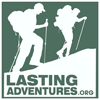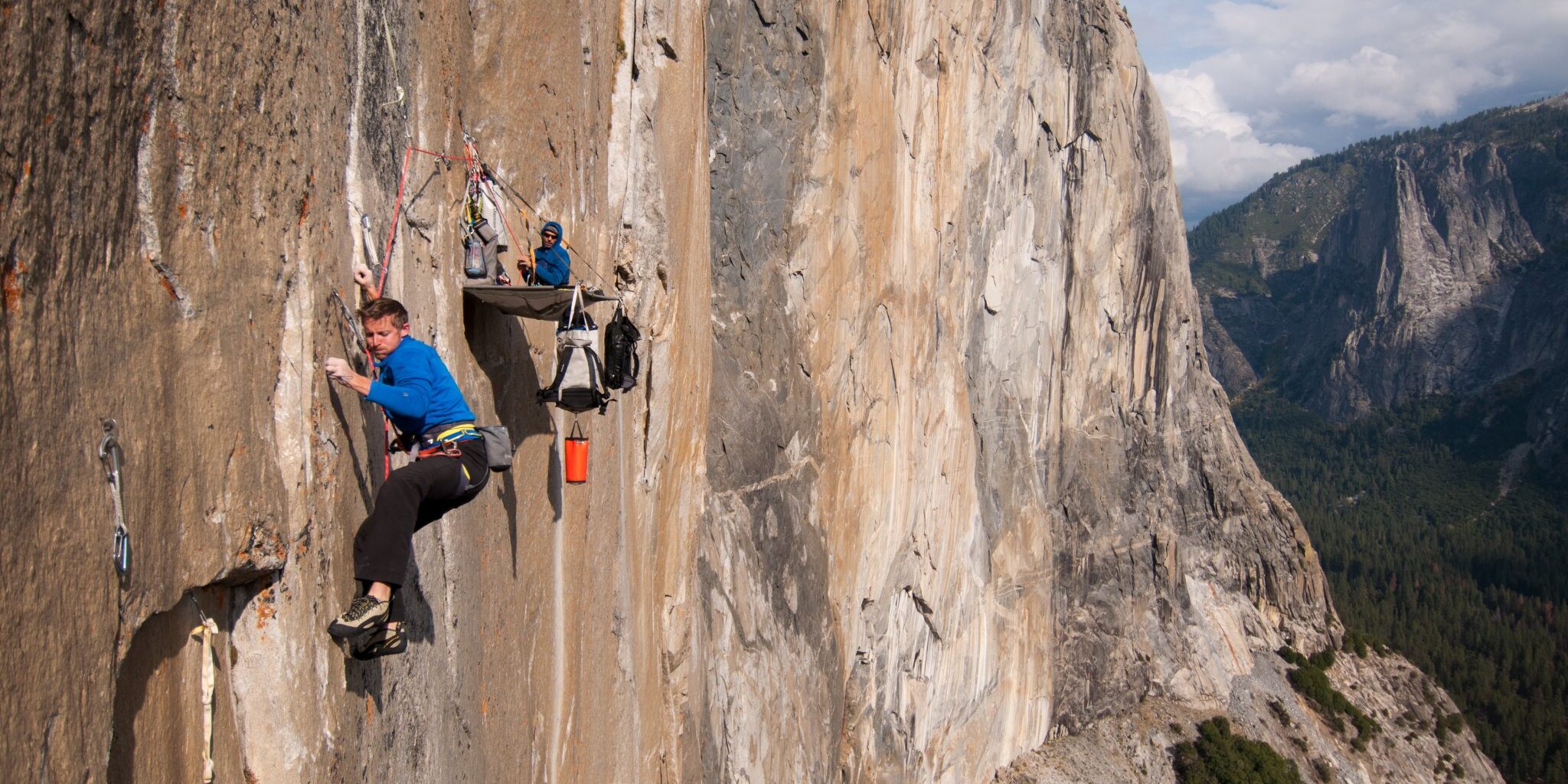Tip #0: Don’t start with the route pictured above. Photo of legendary El Capitan rock climbing kingpin, Tommy Caldwell, sourced from Facebook.
A mountain guide’s tips for your first rock climbing experience in Yosemite.
Words by LA guide and program director, Matt Schilowitz
Since the inception of modern rock climbing, Yosemite Valley has long been universally revered as its mecca. The Valley’s mystique and rich history beckon climbing pilgrims from near and far, who commence among the monoliths each climbing season to experience the big walls that resurrect Yosemite’s much deserved allure. Some come for a week, some for a season, and some never leave. But the difference between a discouraging visit and a deeply fulfilling, potentially life-changing experience, at least in terms of rock climbing, resides primarily in the beta, or approach, that the visitor abides. Here are some tips for first-time Yosemite climbers courtesy of veteran Lasting Adventures guide and Yosemite climbing fanatic, Matt Schilowitz, that will help you navigate the granite and its community during your entry-level rock climbing experience in Yosemite.
–Michael Misselwitz
View this post on Instagram
The legendary late Yosemite local Brad Gobright, attempting the Salathe Headwall on El Capitan. Brad lost his life in a climbing accident in Mexico in 2019, a reminder of the seriousness of climbing safety.
1. Be humble.
“This route is so sandbagged” is a common phrase to hear from a climber hanging from the end of their rope at a crag in Yosemite Valley. Many first time climbers who are uninitiated to the unique style, old school grading, and slippery rock get in over their heads very quickly on even Yosemite’s modestly graded routes. Most of the climbing here follows crack systems and blank slabs, something you won’t find at the climbing gym. The long, steep faces are very different from what many climbers are used to, and it takes a while to build up the endurance needed to climb here. Many routes feature fearsome wide cracks that are difficult to climb, even if the grade suggests they are easy. For a long time, 5.9 was the most difficult grade thought possible, so climbers rated all the hardest climbs 5.8 and 5.9. When people began grading 5.10 and above, many very challenging routes were still stuck with the old school 5.9 grade, even though they would be considered more difficult by today’s standards. Yosemite’s worldwide popularity also contributes to its notoriously difficult routes. With each ascent, the texture of the rock is slowly worn down, and the grease from climbers hands and shoes polishes the surface of hand and foot holds, resulting in greasy feeling cracks and slippery crimps. For these reasons, it is smart to pick a route well below your limit for your first time climbing in Yosemite. If you lead 5.10 at your local sport crag or gym, consider starting on a 5.7 and working your way up the grades so you can get accustomed to the unique challenges of Yosemite climbing.
View this post on Instagram
Climbing’s own superwoman, Lynn Hill, is known to frequent the Yosemite big walls.
2. Get friendly with the locals (wildlife).
Yosemite Valley is teeming with wildlife. It is not uncommon to see birds, squirrels, deer and the notorious black bear at all times of the day and night. For climbers, these wildlife encounters require us to pay special attention to our actions both on and off the wall. First, make sure to check closures relevant to your climbing plans. Many cliffs, like the North Face of the Rostrum and Washington Column, have closures in the spring to protect nesting peregrine falcons. It is your responsibility to research and respect these closures. It is also important to consider how your food is stored while climbing. If you are camping overnight, make sure to clear your car of all scented items and food (including toiletries and food wrappers and trash) so that animals are not tempted to break into your car for a snack. Similarly, don’t leave any food in your pack at the base of a multipitch climb. If the bears don’t get it, the ants will. In wilderness, food must be stored in approved hard sided canisters. Once black bears get a taste for human food they become more aggressive and will do anything they can to get a bite of our high calorie food, resulting in negative interactions with people. Black bears have been put down as a result of this, and it is everyone’s responsibility, including climbers, to make sure this doesn’t happen. While on a climb, be aware that many of the cracks are actually home to bats, snakes and other creepy crawlies. Continued climbing access and friendly animal encounters depend on our ability to be good neighbors to the park’s local wildlife.
View this post on Instagram
Kevin DeWeese demonstrates placing a healthy amount of gear on an aid route in Yosemite Valley.
3. Have the right gear.
Yosemite is primarily a trad climbing and big wall destination. The routes here are a lot longer than many other places, and demand a lot of gear to be climbed safely. Make sure to consult a guidebook so you know what rack to bring for your selected route. Many local climbers consider offset nuts and cams to be very useful in the pin scars here. Climbing routes in Yosemite are also very popular; they can be crowded and busy at times. You may find yourself climbing below other parties, and in the fall line of any equipment they drop or rocks they kick loose. In addition, the exfoliating granite leads to significant rockfall here every year, and the traditional nature of the routes can lead to long falls. For these reasons, it is a good idea to wear a helmet on Yosemite’s routes. Even if you forego one at your local sport crag, remember that climbing in Yosemite poses a lot more potential risks and a helmet is one easy way to safeguard against those hazards. While many people come to Yosemite to enjoy climbing in the moderate temperatures, the reality is that not every day is going to have beautiful weather. Sunscreen and a long sleeve shirt will help keep you from getting too burnt, and a wind or rain jacket and insulating layer can keep you from freezing in a shaded, windy belay.
4. Know how to get down.
Many tales of Yosemite epics involve a complicated descent in the dark. Even though the route itself may seem like the crux of your day, never underestimate the challenging descents that accompany long climbs. Always study the route before you start up, and carry a copy of the guidebook’s description with you. Yosemite has a lot of long routes with either a rappel descent, or a hike off the back side. Pick your descent ahead of time and come prepared with the right equipment to get down. If you are walking off, make sure to carry your approach shoes with you on the climb. If you are rappelling, know how long the rappels are and if you need to bring a second rope, or longer rope. Start your climb early enough so that you can be descending in the daylight. Finding cairns and rappel stations in the dark can be extremely challenging, and has forced many climbers into an unplanned bivy, until the morning sun illuminated their path down. As a backup, always carry a headlamp with fresh batteries and emergency bivy supplies on multipitch routes. Even on single pitch climbs, know what the anchor setup is and have a plan if it is not in the condition you expect. To preserve the quality of the anchors, avoid top-roping through fixed anchors. Use your own materials, and have the last climber rappel off fixed anchors.
View this post on Instagram
The Stonemasters, part of Yosemite Valley’s rich climbing history.
5. Learn the history.
Yosemite has been a climbers paradise since the mid 1800’s and many ‘firsts’ have happened on the steep granite walls and peaks here. The historical significance adds to many people’s experience climbing here and it is important to respect the ascents of previous climbers and leave no trace so that future generations can experience Yosemite in the same way that climbers have for decades. In 1869, John Muir made the first ascent of Cathedral Peak. He was captivated by the view and became infatuated with the beauty of the Sierra Nevada. This was during John Muir’s first summer spent living in Yosemite, and he came back for many years, and ultimately was instrumental in protecting Yosemite as a national park. In 1875, George Anderson made the first ascent of Half Dome, also marking the first use of direct aid in Yosemite. Warren Harding and his team made the first ascent of El Capitan via The Nose route in 1958 after a 2 years long effort. In 1993 Lynn Hill made the first free ascent of The Nose, a feat which was not repeated until 2005! The history of climbing in Yosemite is rich and interesting; climbing here is so unique because we can really interact with our history. Remember any time you place your hand on a hold that many historical figures have had their hands in the exact same spot. Be thankful for the routes established by previous generations and respect their legacy.
First time to Yosemite route suggestions:
Swan Slab Gully – 5.6 (3 pitches)
Royal Arches – 5.7 A0 (15 pitches)
Nutcracker – 5.8 (5 pitches)
Super Slide – 5.9 (5 pitches)











Thanks a lot for sharing such a great piece of article! I found it a good helpful write-up with a good sound and explanation. Here I have seen some valuable ideas that are definitely helpful for every climbing enthusiast. Please keep sharing more updates!